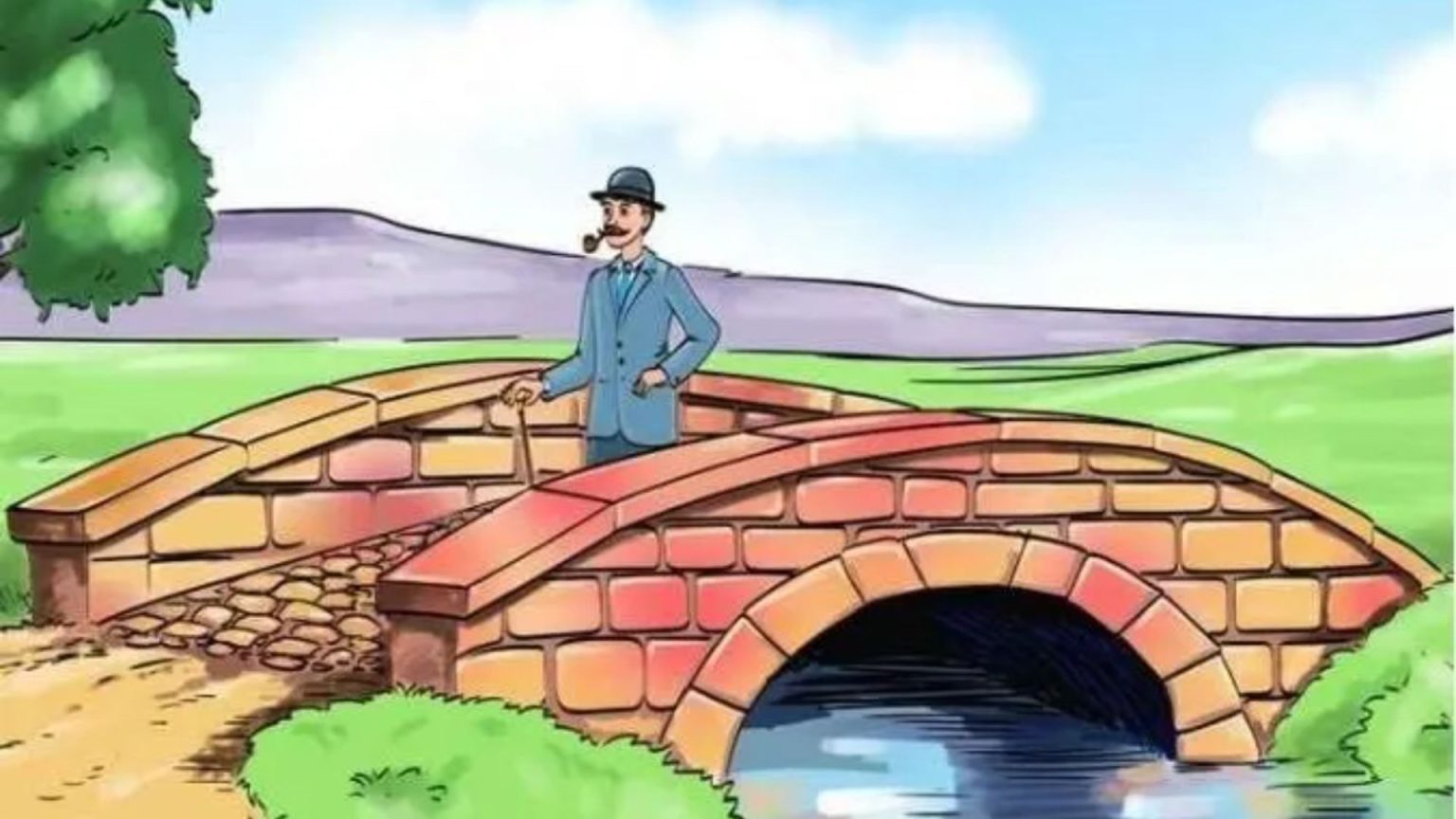This brainteaser presents a seemingly tranquil scene of a man strolling across a bridge, challenging observers to identify a subtle incongruity within seven seconds. The simplicity of the image, with its minimal background details and uncluttered sky, makes the task deceptively difficult. The lack of prominent features eliminates obvious starting points for analysis, forcing the viewer to scrutinize less conspicuous elements. This absence of visual clutter, while aesthetically pleasing, adds a layer of complexity to the puzzle, demanding a more focused and discerning approach. The challenge encourages a meticulous examination of the image, pushing observers to look beyond the immediately apparent and delve into the finer details of the scene.
The key to unraveling this visual enigma lies in directing attention to the area behind the strolling figure. The flowing water provides a crucial clue, urging a closer inspection of its behavior. The ability to quickly discern the anomaly speaks to strong observational skills and rapid cognitive processing. This type of puzzle tests the capacity to efficiently analyze a large volume of visual information while under pressure, requiring a combination of keen perception and mental agility. It underscores the importance of focused attention and the ability to filter out distractions in order to isolate the critical element that disrupts the scene’s harmony.
Successfully deciphering optical illusions and brainteasers offers a range of cognitive benefits, stimulating various brain regions and enhancing mental acuity. These puzzles provide a form of mental exercise, promoting cognitive flexibility and strengthening problem-solving abilities. The process of analyzing visual information and searching for hidden patterns sharpens analytical thinking, encouraging a methodical approach to problem-solving. Furthermore, these activities can improve memory function by engaging recall processes and requiring the retention of visual details.
Beyond these analytical benefits, optical illusions and brainteasers also nurture creativity. The need to think outside conventional frameworks and consider alternative perspectives fosters innovative thought processes. The challenge of deciphering these visual riddles encourages individuals to explore unconventional solutions and develop flexible thinking patterns. Moreover, the focused concentration required to solve these puzzles enhances attention span and improves the ability to filter out distractions. The act of concentrating on a specific visual task strengthens focus and cultivates a more disciplined approach to mental processing.
The engaging nature of these puzzles also offers a form of stress relief and relaxation. The satisfaction derived from successfully solving a challenging brainteaser can provide a sense of accomplishment and mental stimulation, acting as a counterbalance to daily stressors. This playful engagement with visual puzzles offers a healthy and productive way to unwind and engage in mentally stimulating activities. Research from the University of Glasgow has even suggested that engaging with optical illusions can improve eyesight by exercising the eye’s ability to discern fine details. Escape London further emphasizes the potential of puzzles to boost brain activity and potentially reduce the risk of dementia.
This specific brainteaser, with its focus on the flowing water, highlights the importance of observing the interaction between elements within a scene. The solution, revealed below, centers on the absence of water flow on the far side of the bridge. This seemingly minor detail disrupts the natural logic of the scene, creating a subtle yet noticeable incongruity. The ability to spot this discrepancy demonstrates a keen eye for detail and an understanding of how elements within a visual field should interact. The puzzle’s simplicity underscores the power of subtle discrepancies to challenge our perception and highlight the importance of careful observation.
The provided examples of additional puzzles, including spotting a panda among a cluster of snowmen, finding a hidden dog in a rocky landscape, and locating a police officer within a complex scene, further illustrate the diverse nature of visual challenges. These puzzles test different aspects of visual processing, from pattern recognition to figure-ground separation. The inclusion of these additional challenges encourages continued engagement with visual puzzles and highlights the wide array of cognitive benefits they offer. The time-limited nature of these tasks adds an element of pressure, further enhancing the cognitive workout and promoting mental agility. Each puzzle presents a unique set of visual cues and requires a distinct approach to problem-solving, further reinforcing the value of these exercises in developing a range of cognitive skills.


